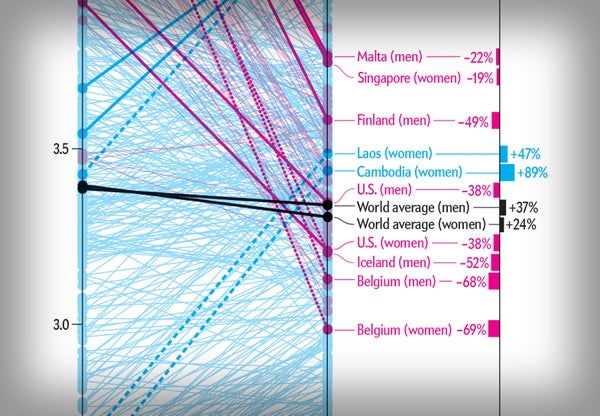On supporting science journalism
If you're enjoying this article, consider supporting our award-winning journalism by subscribing. By purchasing a subscription you are helping to ensure the future of impactful stories about the discoveries and ideas shaping our world today.
Cardiovascular risk from the accumulation of “bad” cholesterol in blood vessels is shifting from high-income Western countries, especially those in Europe, to low- and middle-income countries, particularly in East and Southeast Asia. A meta-analysis of 1,127 studies comprising 102.6 million people worldwide shows a significant drop in bad cholesterol from 1980 to 2018 in countries such as Finland, Belgium and the U.S. and a strong rise in Thailand, Malaysia, Nigeria and Malawi. Two major factors in high-income populations are less consumption of saturated fats and widespread use of lipid-lowering medications, notably statins, says study co-leader Majid Ezzati of Imperial College London. In lower-income populations, eating saturated fats is rising, and statins are not common. Researchers had limited evidence about an emerging shift a decade ago, but Ezzati is surprised to see “just how far it has gone.”
.png?w=900)
Credit: Jen Christiansen; Source: “Repositioning of the Global Epicenter of Non-Optimal Cholesterol,” by NCD Risk Factor Collaboration (NCD-RISC), in Nature, Vol. 582; June 4, 2020 (data)
